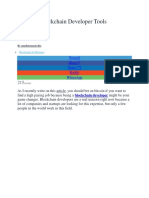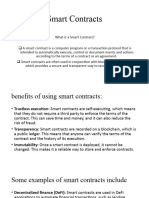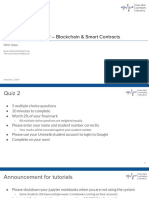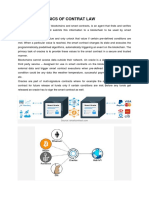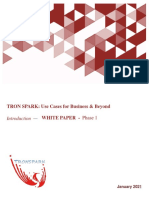0% found this document useful (0 votes)
17 views11 pagesFew Questions
Oracles in blockchain are essential components that connect blockchains to external data sources, enabling them to access real-world information. There are several types of oracles, including software oracles that fetch data from online sources, hardware oracles that gather data from physical devices, and consensus-based oracles that aggregate information from multiple sources for reliability. Oracles are crucial for expanding blockchain functionality in various industries such as finance, supply chain, and insurance by automating processes and ensuring accurate data input.
Uploaded by
posif77359Copyright
© © All Rights Reserved
We take content rights seriously. If you suspect this is your content, claim it here.
Available Formats
Download as PDF, TXT or read online on Scribd
0% found this document useful (0 votes)
17 views11 pagesFew Questions
Oracles in blockchain are essential components that connect blockchains to external data sources, enabling them to access real-world information. There are several types of oracles, including software oracles that fetch data from online sources, hardware oracles that gather data from physical devices, and consensus-based oracles that aggregate information from multiple sources for reliability. Oracles are crucial for expanding blockchain functionality in various industries such as finance, supply chain, and insurance by automating processes and ensuring accurate data input.
Uploaded by
posif77359Copyright
© © All Rights Reserved
We take content rights seriously. If you suspect this is your content, claim it here.
Available Formats
Download as PDF, TXT or read online on Scribd
/ 11












